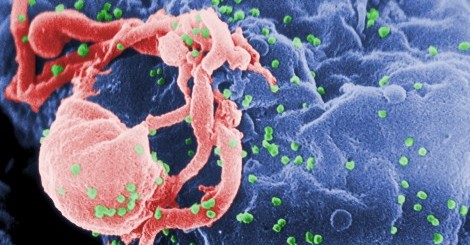
“I’d like to share a revelation that I’ve had during my time here,” Agent Smith tells Morpheus in The Matrix. “It came to me when I tried to classify your species and I realized that you’re not actually mammals. … You move to an area and you multiply and multiply until every natural resource is consumed and the only way you can survive is to spread to another area. There is another organism on this planet that follows the same pattern. Do you know what it is? A virus.” It’s a memorable speech, but it turns out not to be great virology. As this study on the evolving virulence of HIV reminds us, the ideal dynamic between a virus and its host is not a disease state that leaves the host spent. In fact, the ultimate situation for a retrovirus like HIV may be permanent integration in the human genome with no associated pathology, as with many retroviruses before it.
Now, of course we aren’t there yet. HIV infection and AIDS are still very much a reality for millions in South Africa, Botswana, and around the world. They still need medication, support, and compassion. Still, I think it is important to remember that disease is not a necessary outcome of man and virus interacting, but a temporary dynamic born out of ignorance. The virus is learning how to live with our immune system, and our immune system is learning how to deal with the virus. Maybe there are some other relationships where conflict isn’t absolutely necessary but just a product of ignorance? Feel free to propose your own examples. Since it is advent, it reminds me that conflict between God and man isn’t required; by being incarnate as Jesus, God made it possible to know him and reverse our ignorance that temporarily created enmity between God and man.
Andy has worn many hats in his life. He knows this is a dreadfully clichéd notion, but since it is also literally true he uses it anyway. Among his current metaphorical hats: husband of one wife, father of two teenagers, reader of science fiction and science fact, enthusiast of contemporary symphonic music, and chief science officer. Previous metaphorical hats include: comp bio postdoc, molecular biology grad student, InterVarsity chapter president (that one came with a literal hat), music store clerk, house painter, and mosquito trapper. Among his more unique literal hats: British bobby, captain’s hats (of varying levels of authenticity) of several specific vessels, a deerstalker from 221B Baker St, and a railroad engineer’s cap. His monthly Science in Review is drawn from his weekly Science Corner posts — Wednesdays, 8am (Eastern) on the Emerging Scholars Network Blog. His book Faith across the Multiverse is available from Hendrickson.

Hi–thank you for your intriguing and suggestive thoughts. I’d like to tweak the idea a bit, from the standpoint of someone who lives with a chronic viral infection (though not HIV). You write of the possibility of “permanent integration…with no associated pathology.” I would add one qualification to that: the pathology may not be florid, but the integration of the virus still represents a “new normal” that the host doesn’t experience as wellness, or leaves the host vulnerable in other ways. And to add to the metaphoric application of virology to conflict, I’m reminded of Peter Steinke’s discussion of the “viruses” of a congregation, which include things like gossip and conflict-avoiding triangulation. It’s possible that such social habits can become “integrated” into a congregation in such a way that they have a “stable” way of dealing with conflict. It may never erupts in obvious symptomatology. But the hushed conversations in the back hallways and the people leaving in disgust and bitterness don’t exactly represent health either.
Thanks for the suggestions, Cameron. I certainly did not want to diminish the genuine challenges of any individual’s experience with a disease, acute or chronic. When I spoke of “permanent integration” I had in mind a phenomenon that is unlikely to occur with HIV in our lifetimes, and probably won’t be experienced by any one individual as a transition. Actually, I’m not sure we fully understand what the stages of the process would look like. What we do know is that when we look at the human genome, there is strong evidence that some parts used to exist as distinct retroviruses. We can’t associate pathology with those former viruses because they are in everyone’s genome from birth; we don’t know what it looks like to live without them. That’s somewhat different than the experience of a chronic infection that creates a new state which is distinguishable from what we generally considered to be wellness.
Still, your point that it is possible to create a “new normal” situation is well taken. And the group dynamics you describe can be quite subtle and even at times insidious; without a perspective to see that there are alternatives, it can be very hard to recognize how they are damaging the health of our congregations or other communities and yet damage is being done.